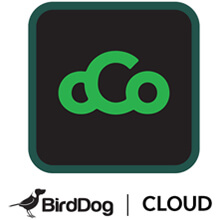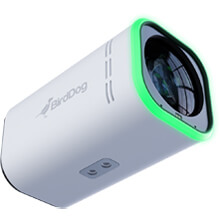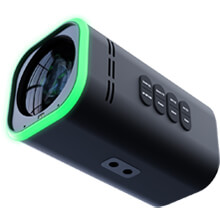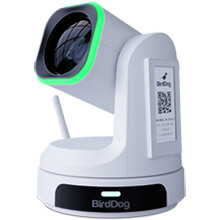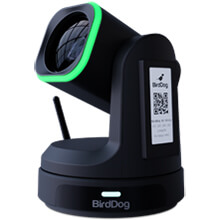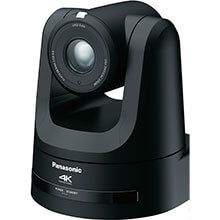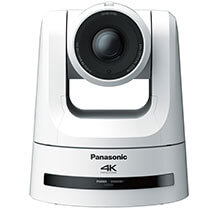
Demystifying NDI: Understanding the Evolution and Differences of NDI, NDI|HX2, and NDI|HX3 in the World of Video over IP
By James Tremayne | Senior Technical Product Specialist, Holdan
In the evolving landscape of video over IP, NDI has emerged as a prominent technology, offering various compression options to cater to different production needs. NDI, developed by NewTek/Vizrt, has evolved through various iterations, with NDI|HX2 and NDI|HX3 representing more advanced compression options that cater to different bandwidth and quality requirements. With all these different acronyms I thought it best to try and de mystify what these are and highlight the differences to avoid being caught out.
The different flavours of NDI
The original NDI, now referred to as Full Bandwidth (or Full Fat) NDI, provides lossless video transmission, ensuring the highest quality without compromise. It is particularly well-suited for live broadcasts and high-end production environments where pristine video quality is paramount. However, this comes at the cost of higher bandwidth usage, necessitating robust network infrastructure to support the data-intensive streams. Often requiring a 1Gbe network at the very least, this can prove to be a limiting factor when multiple video sources are connected and especially if you are looking to run at 4K resolutions. Detailed planning needs to go into the design of the network to achieve a successful deployment at scale.
NDI|HX2, on the other hand, strikes a balance between image quality and bandwidth consumption. It employs efficient compression to deliver high-quality video while significantly reducing the bandwidth required compared to full NDI. This makes NDI|HX2 an excellent choice for scenarios where network resources are limited, such as remote production setups or educational institutions.
NDI|HX3 takes this a step further by offering even greater compression efficiency and lower latency than its predecessor. It is the latest advancement in the NDI suite, designed for environments where bandwidth is at a premium. Despite the compression, NDI|HX3 maintains high video quality, making it suitable for a wide range of applications, including corporate communications and remote productions.
The latest NDI|HX3 Cameras we have seen have offered significant improvements to both the latency and quality that’s achievable with the more compressed formats. More on that later……
Bandwidth & Compression
Full Fat NDI typically requires a bandwidth of approximately 150 Mbps for 1080p60 content, while NDI|HX formats can operate at significantly lower bitrates, thanks to their use of H.264 and H.265 codecs. This translates to a reduced network load and the ability to run more streams concurrently.
When it comes to 4K video, the bandwidth requirements escalate. A single 4K60 NDI stream can demand approximately 300 Mbps of bandwidth. This necessitates careful planning and network design, especially when multiple 4K streams are involved, to avoid overloading the network infrastructure.
NDI|HX2 uses H.264 compression to reduce the required bandwidth making it suitable for environments like remote production, education, and corporate communications, where network resources may be more constrained. NDI|HX3 takes this a step further by offering even greater compression efficiency and lower latency than its predecessor, making it ideal for similar use cases but with even tighter bandwidth limitations.
The choice between H.264 and H.265 compression is crucial in the context of NDI. H.265 (HEVC), offers up to 50% better compression over H.264, which can translate to lower bandwidth or storage needs for the same video quality. This efficiency is especially beneficial for higher resolution formats like 4K, where bandwidth savings are significant. The adoption of H.265 has generally been slower due to its higher processing requirements for encoding and decoding.
Another point to note here is to always allow for some network headroom, especially when working on converged and busy networks. Not all NDI signals are a constant bitrate, and will generally fluctuate depending on the complexity of the what its capturing.
Now, lets dig in to NDI|HX3 a little more
NDI|HX3 represents a significant advancement in the realm of IP-based video workflows, offering a suite of benefits over its predecessors. One of the primary advantages is its improved compression efficiency. This efficiency is particularly beneficial for 4K video streams, which are becoming increasingly common in professional video production. With NDI|HX3, it's possible to deliver 4K content over networks that previously would have struggled with the bandwidth demands of Full Bandwidth NDI.
NDI|HX3 - Certified?
A recent change is that NDI|HX3 comes via a certification program. NDI|HX3 certification brings several benefits to video streaming and production. It ensures that products meet stringent technical and branding guidelines, providing an official endorsement that can enhance market trust. The certification also verifies that product claims align with marketing promises, ensuring transparency and reliability.
Other IP Formats?
Of course, to use the classic BBC adage ‘other formats are available’. But comparatively, other IP video formats like ST2110 SRT, RTMP, and RTSP each have their own niches. This is not an exhaustive list of all formats available, I just wanted to highlight some of the key ones for now.
SRT is designed for secure, low-latency video transport over unpredictable networks, making it suitable for internet-based transmission where bandwidth can fluctuate. SRT is a superb choice if you need to send your video signals out over the internet as it employs some packet re-transmission if anything is lost due to a poor connection. This can impact the overall latency of the signal as it retransmits the data, however it can result in a more stable when compared to other formats that may completely break up in the same network environment.
BirdDog Cloud
Connect any number of NDI or SDI sources to anywhere across the globe.
WebRTC stands out for real-time communication with minimal delay, making it ideal for live events and interactive sessions.
RTMP, although being phased out due to its reliance on the now-obsolete Flash, has been widely used for streaming to platforms like YouTube and Twitch. It is still widely used for low-latency broadcasting and as an ingest protocol for other formats.
RTSP remains relevant for applications requiring low-latency streaming, such as surveillance systems.
I have not mentioned the ST2110 protocol yet - which no doubt deserves its own dedicated blog post. ST2110 was the golden child at this years NAB conference over in Las Vegas, and is gaining traction as the next gen, higher performance IP protocol for high end broadcasters and studios. However if you think NDI is bandwidth hungry, then SMPTE-2110 completely blows this out of the water as it has been optimised for Uncompressed, Low latency, 4K transmission so generally requires 10G networking at a minimum, and depending on the scale of the deployment, it is not unusual to require up to 100G trunks.
I am looking forward to experimenting with the IPMX protocol in time, and of course the Dante AV protocol is also an option, especially if you are already familiar with the Dante Audio protocol.
NDI distinguishes itself from these protocols by its high efficiency over local networks, ease of setup with auto-discovery features, and its ability to transport high-quality video with ‘low’ latency, which is particularly advantageous in live production environments. While NDI excels in controlled network environments, it may not be the best fit for streaming over the public internet, where protocols like SRT can provide more reliable performance.
The choice between the wide array of video formats will largely depend on the specific requirements of the production environment, including the quality of video needed, the available network bandwidth and most importantly the latency that’s acceptable. Everyone wants their Video system to be able to route every video feed, everywhere, with ZERO latency, all at the same time. That just is not possible without first understanding the technical nuances and real-world applications of each format. It is essential for making an informed decision that aligns with the goals of the production environment. The comparison between H.264 and H.265 further complicates this decision, necessitating a careful consideration of the trade-offs between quality, bandwidth, and computational power. Meanwhile, the broader landscape of IP video formats presents a range of options, each with its own strengths and weaknesses, ensuring that there is a solution for virtually every streaming scenario.
We have various solutions and experience with these technologies so if you have any questions, just reach out to our technical team who would be happy to help.
For more information please contact our Sales Desk:
+44 (0)1457 851000 | sales@holdan.co.uk.
27 Nov 2025
PTZOptics: Versatile, Professional PTZ Solutions for Every Production Environment
19 Nov 2025
Expanding Possibilities: Introducing Sonnet Technologies’ High-Performance Solutions for Apple and Professional Workflows
14 Nov 2025
Take Command of Your Creativity: Meet the Elgato Stream Deck Family
26 Sep 2025
Lumens VC-TR60A PTZ Camera Earns Microsoft Teams Certification


